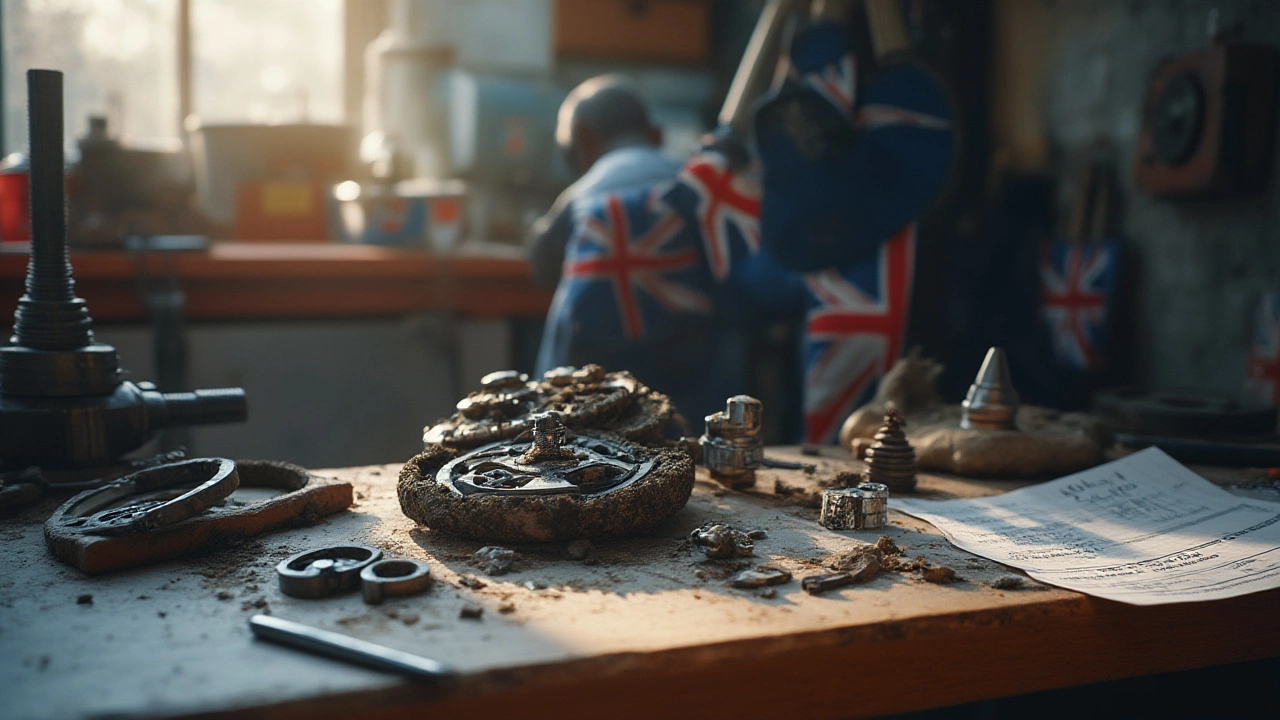Picture this: you’re just about to set out for a weekend road trip, and your clutch starts acting up. Great timing, right? The thought of facing the repair shop shuffle or even wrenching on the car yourself pops up—and so does a big question: how long does it actually take to swap out a clutch kit? Is this a one-afternoon adventure, or will your car be MIA for days?
If you’re wrestling with clutch issues, you’re far from alone. Around 90% of manual transmission drivers will need a clutch job by 120,000 miles, according to industry surveys. Whether you’re looking to schedule some shop time or think you can tackle it on your own, timing really matters. No one wants their ride (or their daily routine) sidelined longer than it has to be.
What Really Impacts Clutch Kit Replacement Time?
Let’s get real here: no two clutch jobs take the exact same time. Think about it like this—the car make and model, age, and even rust can throw timelines way off. Some small front-wheel-drive cars have a clutch that comes out surprisingly easy. Those little hatchbacks? Mechanics can zip through the process in about 3-4 hours if they’re seasoned. But swap that for a heavy-duty 4x4, or, say, an older pickup truck caked with years of mud and grime? That timeline can double.
The average clutch kit replacement by a pro shop lands somewhere between 4-8 hours for most vehicles—this is straight from flat-rate repair guides and verified by recent surveys of ASE-certified mechanics. High-end or European cars (think BMW, Audi) tend to fall at the higher end, sometimes taking up to 10 hours, especially if the transmission is hard to access or has extra support brackets that need to be removed.
If there’s a wild card, it’s seized bolts. Mechanics dread the infamous transmission bolt that’s so rusted, it could pass as statue art. When that happens, add an extra hour (at least) for wrestling, torching, or drilling. You might not see that on the estimate, but trust me, it happens more than you’d think.
Here’s a handy table showing average replacement times for different vehicle types:
| Vehicle Type | Pro Mechanic Time (Hours) | DIY Time (Hours) |
|---|---|---|
| Small FWD Car (e.g. Honda Civic) | 3–5 | 7–10 |
| Mid-size Sedan (e.g. Toyota Camry) | 4–6 | 8–12 |
| Pickup Truck (e.g. Ford F-150) | 6–8 | 12–18 |
| 4WD SUV (e.g. Jeep Wrangler) | 7–10 | 14–21 |
| High-Performance Car (e.g. BMW M3) | 8–10+ | 16–24 |
Notice the DIY numbers? Take those seriously. Even skilled amateurs run into surprises: rust, parts that fight back, or just plain lack of tools. A friend of mine spent two whole weekends (and six trips to the parts store) just because of a stubborn drive shaft bolt—chalk that up as a true clutch saga.

Inside the Process: Step-By-Step Breakdown
I’ll walk you through the actual workflow for a clutch job, so you know exactly why this takes time, plus where most delays come from.
- Vehicle Prep & Safety: Before anything, disconnect the battery. That’s non-negotiable. Next, raise the vehicle securely on a lift or sturdy jack stands. Safety gear is a must because you’ll be under the car a lot. Just setting things up can take 30 minutes to an hour, especially if you’re working at home.
- Transmission Removal: This is hands-down the time-consuming chunk. First, remove the driveshaft or CV axles, shift linkage, exhaust components (sometimes the whole system!), bracketry, and maybe a few stubborn sensors. Dropping the transmission itself is heavy work; pros with transmission jacks can do it smoothly, but a DIYer with a floor jack? Expect a workout. Factory repair manuals estimate 2-4 hours here alone.
- Clutch Kit Out & In: Finally, you can see the clutch. But you’ll need to remove the pressure plate, clutch disc, and check the flywheel for wear or heat damage. If the flywheel’s scored or glazed, it’ll need resurfacing or replacing—that’s a side quest that may add another day if you need machine shop help. Most experts strongly recommend replacing or resurfacing the flywheel, not just bolting on a new clutch.
- Install the New Kit: Line up the clutch disc and pressure plate perfectly (a clutch alignment tool is a lifesaver here). Don’t forget to lube the splines lightly—too much grease and you’ll get clutch chatter. Replacing the throwout (release) bearing and pilot bearing comes next; don’t skip these, as a worn bearing can make your new clutch feel old fast.
- Buttoning Up: Bolt up the transmission carefully. A rushed install here can crack the housing or damage the new clutch. Reconnect all linkages, axles, and wiring. Top off transmission fluid if it was drained. Plan a solid hour here, even for pros, because mistakes at this stage lead to massive do-overs.
- Testing: Before lowering the car, verify gear engagement, feel for smooth clutch travel, and check for leaks. Hop in, test the clutch engagement, and make sure nothing strange happens—like a sudden grinding noise or new vibration. Pros will test-drive every car, typically logging at least 10 minutes of stop-and-go and freeway speeds.
Now, toss in a few extra tasks—replacing hydraulic slave cylinders, repairing snapped bolts, or dealing with specialty flywheels (hello, dual-mass disasters)—and that time estimate can grow quickly. About 20% of clutch jobs require a new master or slave cylinder, since those often fail right after the original clutch wears out.
Here’s a bonus tip: take pictures or label every bolt and sensor before pulling them out. Come midnight, they might all look the same. Bags, markers, a pad and pen—lifesavers for finishing the job strong and not losing your mind on reassembly.

DIY vs. Professional: Making the Right Choice
So, are you better off having the shop handle this, or should you clear a weekend, grab some wrenches, and go for glory yourself? It depends on your wallet, tools, space, and patience for headaches.
Cost-wise, pro shops in 2024 were charging between $800–$1,500 for a typical clutch kit replacement—that’s with labor and decent parts. High-end models can push $2,000 with tricky designs or luxury car tax. Doing it at home? You’ll save the labor, but spend somewhere from $200–$700 on a quality clutch kit and maybe $50–$100 on fluids, rental tools, and extras.
But let’s talk time and sanity. For shop work, most jobs are finished same day to within 24 hours. A Friday morning drop-off often means you’re back on the road by dinner if the parts are on hand—but if anything looks odd inside, you might get a dreaded “good news/bad news” phone call.
Going DIY? If you’ve got a full set of tools and some prior wrenching experience, that small FWD car clutch could be done Saturday to Sunday—if luck’s on your side. No surprise, seasoned mechanics will warn that the first clutch job often takes at least twice as long as you’d expect. Novices usually hit their stride after a couple of these. Ask local auto parts store folks, and you’ll hear honest horror and triumph stories in equal measure.
Safety is another thing worth repeating. Dropping a transmission with makeshift tools in a cramped garage risks injury or costly damage if something slips. Pros use lifts, transmission jacks, and torque specs from factory manuals for a reason—and most offer a warranty on their work (shop surveys say roughly 1-year/12,000-mile coverage is standard).
- Feeling ambitious? Check your car’s online owner forums. There are often step-by-step photo guides, tool lists, and „gotchas” specific to your exact make and model. YouTube even has video tutorials for just about everything now—though watching two or three versions is smart before diving in.
- Time yourself honestly. If you’re racing the sun, have a backup plan for getting to work Monday. And line up some friends—holding a transmission in place is way easier with a helper and an extra set of muscles.
- Be real about tool costs. If you’re going DIY just this once and have to buy a ton of tools, you might end up spending what a shop would charge anyway. Rental programs can help but add in their cost to your math.
- If you run into stuck bolts, take a breather and bring in penetrating oil (Kroil or PB Blaster are favorites). No shame in calling for backup from an experienced friend or local mobile mechanic at that stage.
There are benefits to both approaches. Doing it yourself builds skills and saves money, but pro work gets you peace of mind and usually saves time. Either way you go, knowing the real breakdown of work—and how wild the timeline can get—means those clutch woes won’t leave you stranded or stressed. More than anything, take it slow and steady, and your ride (and schedule) will thank you later.






